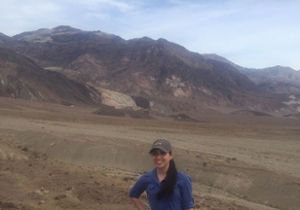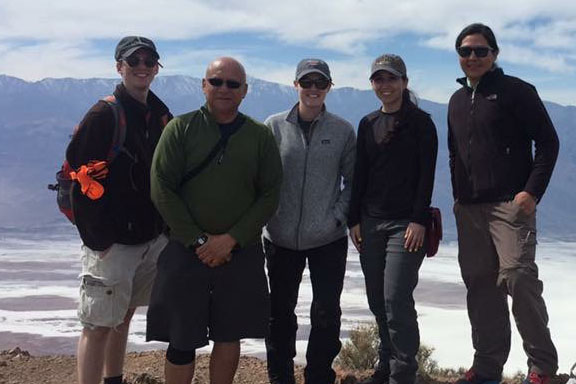Romero Awarded NSF Fellowship
04-29-2016
Writer(s): Jill Wable, Kenneth Ridgway, Mariah Romero

EAPS would like to congratulate Mariah Romero on her 2016 National Science Foundation Graduate Research Fellowship award. She is one of 2000 individuals receiving these prestigious awards from the almost 17,000 applicants submitted for consideration this year.
The NSF has funded fellowships to selected individuals, who are early in their careers, since 1952. The purpose of the funding is to ensure the vitality and diversity of the scientific and engineering workforce in the US. The program recognizes and provides three years support to outstanding graduate students who are pursuing research-based Masters and Doctoral Degrees in STEM areas.
"These awards are provided to individuals who have demonstrated their potential for significant research achievements, and they are investments that will help propel this country's future innovations and economic growth," said Joan Ferrini-Mundy, NSF assistant director for Education and Human Resources.
Ms. Romero is a first-year master's student at Purdue studying geology with her advisor, Ken Ridgway. She received her B.S. in geosciences with an emphasis in geophysics from the University of Arizona in Tucson, Arizona.
Her fellowship proposal is titled “The analysis of the sedimentary record of collisional basin development and crustal evolution: assembling the convergent margin of southern Alaska”. She is interested in understanding the tectonic processes that formed Alaskan mountain ranges.
Ms. Romero will study the growth of continents along the Mesozoic collisional zone in the Alaska Range and the northern Talkeetna Mountains. She will perform field work transecting this area, followed by detrital zircon geochronology and Hafnium isotope analysis in the laboratory.
Her interest in this research developed when she discovered there are many areas of the Alaska Range where the stratigraphy is not well defined, and the tectonic development of the range is poorly understood. The geology of Alaska has not been as well studied as the lower 48 states, in which geology has been studied for well over 100 years.
“In the Alaska Range, we know that there was a collision, but we still need to understand the specific tectonic events that occurred prior, during, and after the collision. There are fundamental concepts that may develop from this scientific investigation." said Ms. Romero. These concepts will help the geologic community understand how other mountain ranges formed by collisional processes such the Himalayas and the St. Elias Mountains.
The processes she is studying resulted in the formation of the Alaska Range, which is the highest mountain belt in North America and home to Mt. McKinley, which we now call Denali. “Mariah is trying to delineate the interrelated processes that formed them to answer; how do you build mountain belts and continents form?” said Prof. Ridgway.
In the past 20 years, there has been a number of advances in uranium-lead dating of detrital zircons; Ms. Romero will utilize these advances to take her research further by using new techniques, tools, and performing field work. She will also use Hafnium isotopes to look at the development of the continental crust. Long term processes allow mantle material to evolve into the continental crust, and the continental crust develops over time, but in each stage zircons are usually present. Within individual zircon grains, the Hafnium isotope ratios of the source magmas can be determined. Using the zircons, she will look at the Hafnium ratios to understand the crustal evolution of the region. Thus determining, if they came from juvenile (primary) melts, which are more mantle derived or if they came from more evolved (secondary) magmas, where continental crust has been remelted during tectonic events.
Ms. Romero will spend about three weeks this summer in Alaska measuring stratigraphic sections of the region to determine depositional environments and basin type; track the changes in stratigraphy across the collisional zone; and to collect samples. There have been studies in other areas, such as southeastern Alaska and the Mystic Subterrane area to the northwest, but there are no studies in south-central Alaska that report Hafnium values. The bigger focus is to, one day, use the Hafnium studies to determine the relationships between the three zones so that we can link mountain building processes at the continent scale.
She plans to work with the USGS and the University of AK building her group of collaborators while in the field. With her NSF Graduate Fellowship, she will build relationships to help her become one of the next generation of faculty members and researchers.
We are proud of how Ms. Romero exemplifies the characteristics the NSF expects from its applicants and have confidence she will continue to excel throughout her years at Purdue and in her career.
